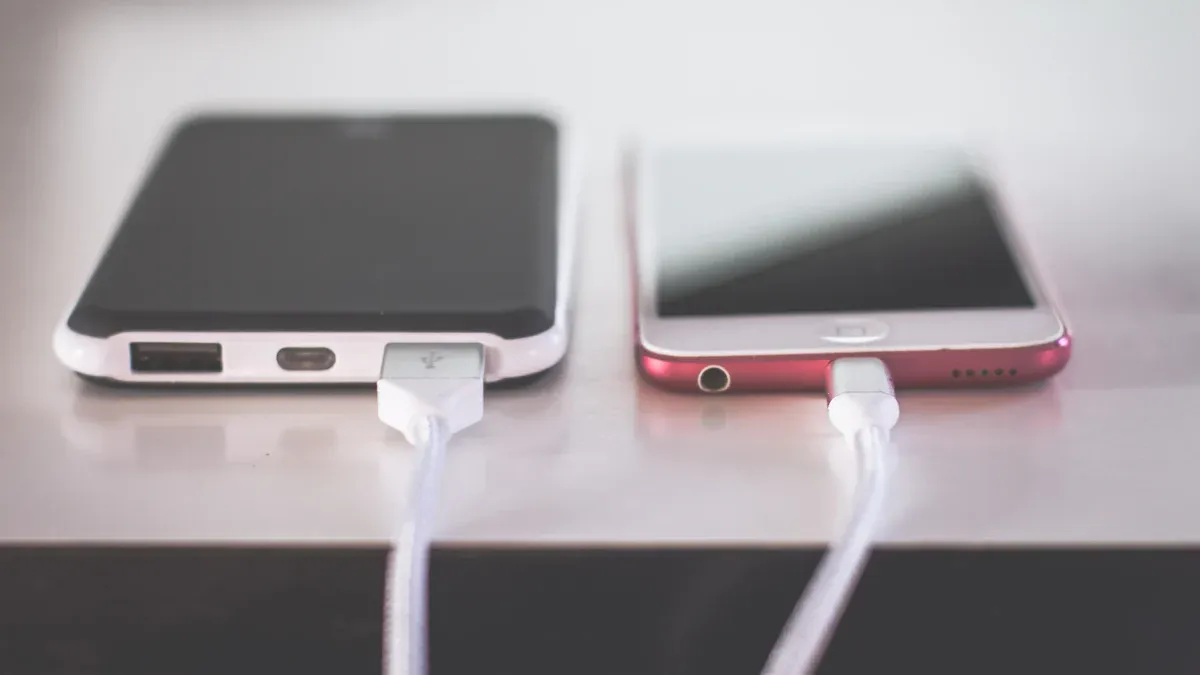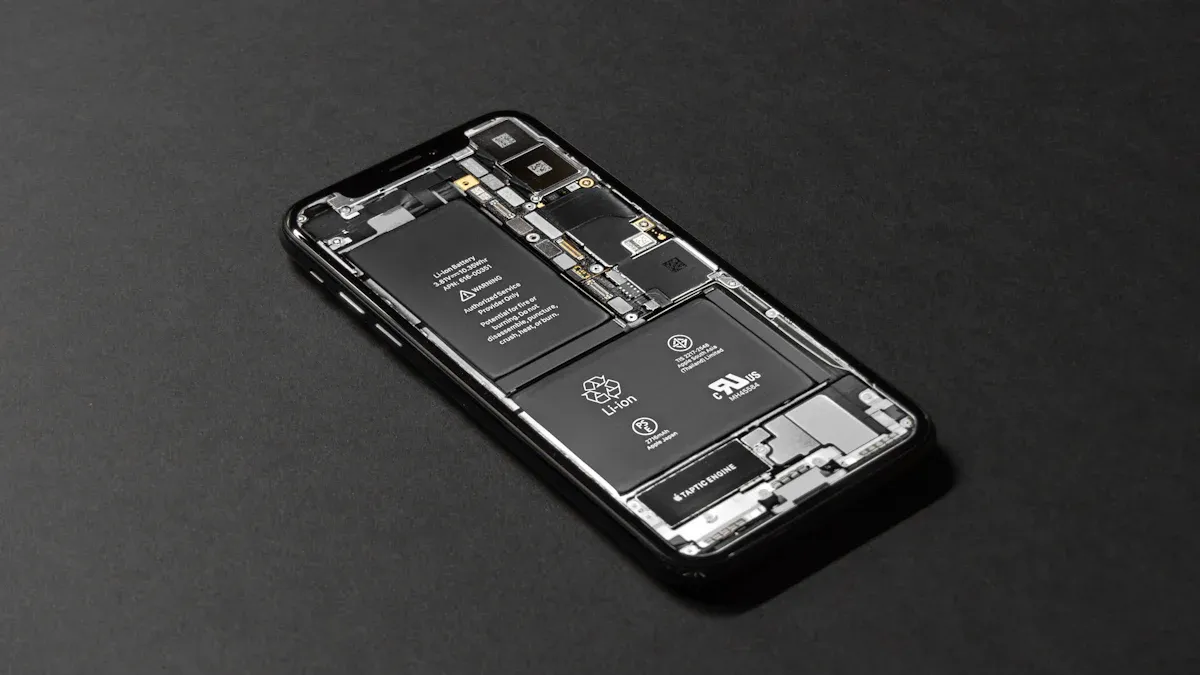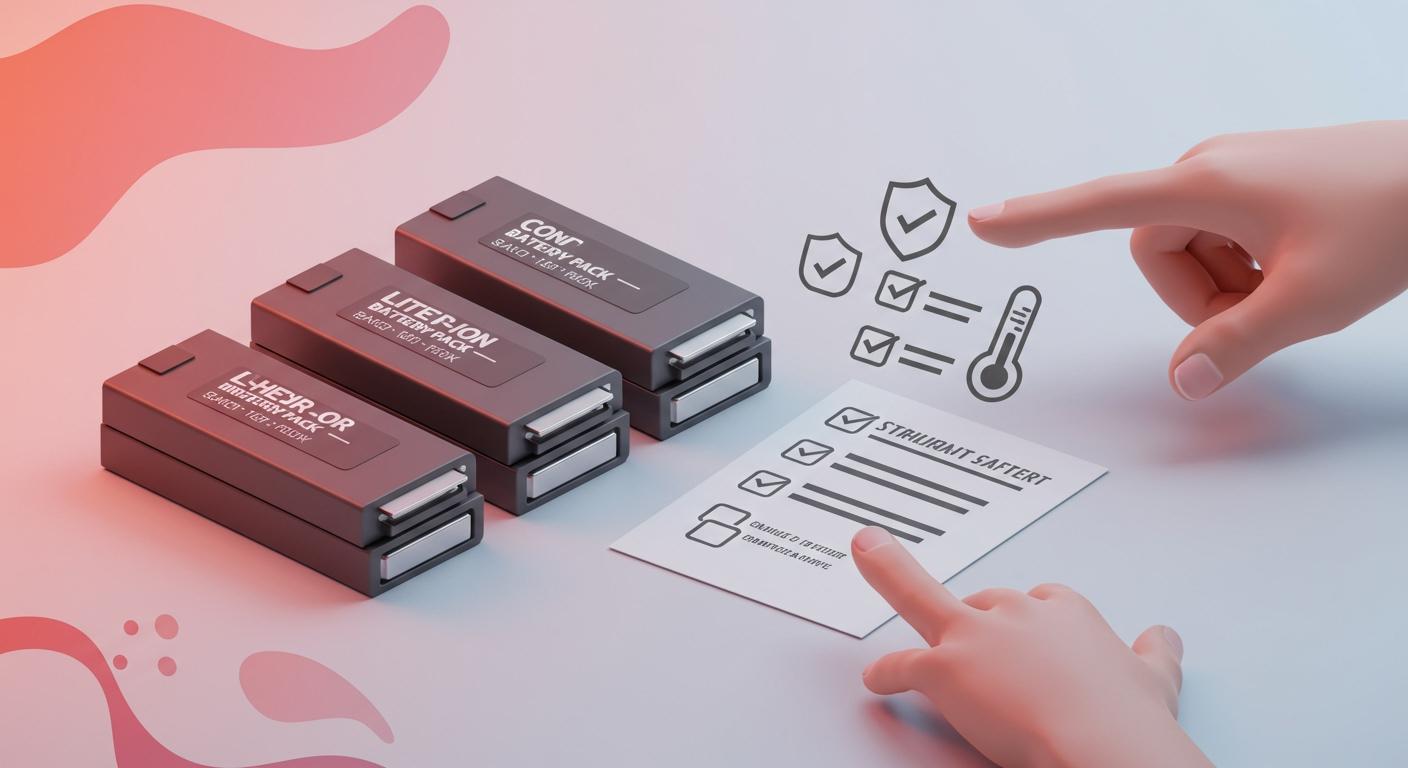Protect Your Lithium Ion Battery Packs with These Tips
You can maintain Lithium ion battery packs safely by adopting simple habits every day. Taking care of them often helps you prevent common problems. For example, do not let batteries run out all the way or get too hot, as these situations can be dangerous.
- Do not let batteries run out all the way.
- Keep batteries away from very hot or cold places.
- Do not charge batteries for too long.
| Good Habits | Lifespan Extension |
|---|---|
| Good care | Up to 15% longer |
| Right temperature | Slows aging by 22% |
| Regular checkups | Increases by 15% |
Small changes help maintain Lithium ion battery safety. They also slow down aging and ensure batteries perform well for longer. Always prioritize safety to reduce risk and keep batteries healthy.
Key Takeaways
- Try to keep your lithium-ion battery charged from 20% to 80%. This helps the battery last longer and stops deep discharges. Store batteries in a cool and dry place. The best temperature is between 59°F and 68°F. This slows aging and keeps the battery working well. Check your battery often for health. Look for warning signs like swelling or strange smells. This helps keep you safe and makes the battery last longer.
Maintain Lithium Ion Battery

Charging Tips
You can keep your lithium ion battery healthy with smart charging. Charge it often to stop deep discharges. Deep discharges can make the battery not last as long. Try to keep the charge between 20% and 80%. This helps the battery last longer and keeps the cells safe. Li-ion batteries are fully charged at 4.2V per cell. LiFePO4 batteries should be charged between 3.50V and 3.65V per cell.
| Battery Type | Fully Charged Voltage (V) | Recommended Charging Voltage Range (V) |
|---|---|---|
| Li-ion | 4.2 | N/A |
| LiFePO4 | 3.6 | 3.50 - 3.65 |
If you store your battery for a long time, charge it to about 50% every six months. This helps stop the battery from getting worse and helps it last longer.
Avoid Overcharging
Overcharging can hurt your battery and is not safe. If you overcharge, the battery can get too hot or even catch fire. Problems like thermal runaway, lithium plating, and damage inside the battery can happen. Battery management systems (BMS) help by watching the voltage and stopping charging when needed.
| Risk Type | Description |
|---|---|
| Thermal Runaway | Battery gets hot too fast and may catch fire. |
| Lithium Plating | Too much lithium builds up and can cause short circuits. |
| Structural Damage | The inside breaks down, making the battery age faster. |
Partial Charging
Partial charging is important for battery care. Charging to about 80% instead of 100% helps the battery last longer. This means the battery spends less time at high voltage, which slows aging. Make partial charging a habit to keep your battery working well. If you store the battery, charge it to 50% every six months to help it last longer.
Tip: Good charging habits and regular charging cycles help your battery work better and last longer.
Battery Pack Maintenance
Storage Tips
You can make lithium-ion batteries last longer with good storage. Always keep batteries at about 50% charge. This helps them work well and lose less power over time. Put batteries in a cool, dry place. Keep them away from sunlight and heat. The best temperature is between 59°F and 68°F. Hot places make batteries age faster and can ruin them forever.
| Temperature (°C) | Degradation Rate of Maximum Charge Storage (%) | Degradation Rate of Warburg Element Resistance (%) | Degradation Rate of Cell Impedance (%) |
|---|---|---|---|
| 25 | 4.22 | 49.40 | 33.64 |
| 55 | 13.24 | 584.07 | 93.29 |
Keep the air not too wet. Try to keep humidity under 50%. This stops rust and short circuits. The battery pack case helps keep water out. Pick cases that block water and dust well.
Tip: Charge your batteries to 50% every six months if you store them for a long time. This easy step stops deep discharge and keeps batteries working well.
Maintenance Cycles
Do regular checks to keep batteries working their best. Charge and use up the battery fully at least once during long storage. This helps balance the cells and stops them from losing power. Check batteries every month or every few months. Look for signs of damage or wear. Write down how the battery works to find problems early.
Doing these things helps batteries stay safe and last longer. Good storage and regular checks protect your batteries. You get more use from your battery packs when you follow these tips.
Battery Life and Health

Monitor Health
It is important to check battery health often. This keeps your devices safe and working well. Regular checks help you find problems early. You can protect battery life by watching for changes. Look at voltage, current, and temperature when charging and using your device. These numbers show how healthy your battery pack is. Many new devices have tools that track these things. They give you updates about battery performance.
You can also watch for these signs to check battery health:
- Your device does not last as long as before.
- Charging takes longer than it used to.
- The battery gets hot when you use or charge it.
- The device shuts down even if the battery looks charged.
- The battery pack looks swollen or bulging.
Tip: Use battery monitoring tools that show real-time feedback. These tools help you find battery problems early. They also help your battery work better.
New technology, like Electrochemical Impedance Spectroscopy, helps you check battery health in real time. This lets you fix problems before they get worse. It helps your battery last longer and work well.
Recognize Warning Signs
You need to know warning signs that show your battery pack has trouble. These signs help you stay safe and keep your battery working well.
- Listen for strange noises like hissing or popping.
- Notice strong or odd smells. These can mean a leak.
- Watch for smoke. Smoke is a big fire risk.
- Look for swelling or bulging.
- Pay attention if battery life drops or drains fast.
- Feel if the battery gets hot when you use or charge it.
If you see any warning signs, act quickly:
- Check for cracks or dents. These can mean damage inside.
- Stop using and replace batteries that are swollen.
- Turn off and unplug devices that get too hot.
- Do not touch leaking fluids. Throw away the battery safely.
- If you smell chemicals, turn off the device and get help.
- If there is a fire, use a fire extinguisher and call for help.
By checking battery health and knowing warning signs, you keep battery life strong. You help your battery work better and keep your devices safe.
Lithium-Ion Battery Care
Temperature Control
You help take care of lithium-ion batteries by watching the temperature. Batteries work best between 59°F and 95°F. If it gets colder than 59°F, batteries may slow down. If it gets hotter than 95°F, batteries can get too hot. They might not hold a charge well. Overheating can also make batteries swell or catch fire. For storing batteries, pick a place between -4°F and 77°F. This helps batteries keep their power and not lose charge too fast.
| Purpose | Optimal Temperature Range |
|---|---|
| Operation | 15°C to 35°C (59°F to 95°F) |
| Storage | -20°C to 25°C (-4°F to 77°F) |
Do not let batteries get too hot or too cold. Cold weather can make batteries lose voltage. It can also make them stop working right. Charging batteries in freezing weather can make them swell or break inside. Hot weather makes batteries get old faster. It can also cause thermal runaway, which is very dangerous. Always keep batteries in safe temperature places.
Tip: Keep batteries away from sunlight and hot things so they do not get too hot.
Safe Handling
Taking care of lithium-ion batteries means handling them safely. Never drop, poke, or crush battery packs. If you damage them, they can leak, catch fire, or even explode. Use covers when you move or store batteries. Covers help stop short-circuits and protect batteries from bumps.
Put batteries in containers that do not conduct electricity. Store them in dry places with good air flow. Do not put batteries in closed spaces that get hot. If you use big battery packs, follow the maker’s rules and use the right tools. Before you use any battery, look for cracks, dents, or swelling. Only use chargers made for lithium-ion batteries. This helps stop overheating.
Note: Check batteries before you use them. If you see damage or swelling, get a new battery right away.
If you follow these steps, you help keep devices safe and make batteries last longer.
You can help your lithium-ion battery last longer by using easy habits.
- Try to keep the charge from 20% to 80%
- Put batteries in a cool and dry spot
- Always use chargers that are approved
| Benefit | Description |
|---|---|
| Safety | Find problems before they get worse |
| Performance | Use more power each time you charge |
| Lifetime | Make the battery get old more slowly |
Begin these habits now to keep your batteries safe and make them last longer.
-

 May.2025.11.24Ternary Lithium Battery vs Lithium-ion: Complete Comparison Guide (2025 Edition)Learn More
May.2025.11.24Ternary Lithium Battery vs Lithium-ion: Complete Comparison Guide (2025 Edition)Learn More -

 May.2025.11.214S2P 18650 14.8V Battery: Complete Technical Guide, Specs, Applications & SafetyLearn More
May.2025.11.214S2P 18650 14.8V Battery: Complete Technical Guide, Specs, Applications & SafetyLearn More -

 May.2025.11.18PCM vs BMS in Lithium Batteries: What’s the Difference and Which One Do You Need?Learn More
May.2025.11.18PCM vs BMS in Lithium Batteries: What’s the Difference and Which One Do You Need?Learn More -

 May.2025.11.17Custom Li-ion Battery Design for Medical Devices (2025 Comprehensive Guide)Learn More
May.2025.11.17Custom Li-ion Battery Design for Medical Devices (2025 Comprehensive Guide)Learn More -

 May.2025.11.17The Future of Lithium-Ion Batteries: Innovation, Sustainability, and Global Market TrendsLearn More
May.2025.11.17The Future of Lithium-Ion Batteries: Innovation, Sustainability, and Global Market TrendsLearn More
















